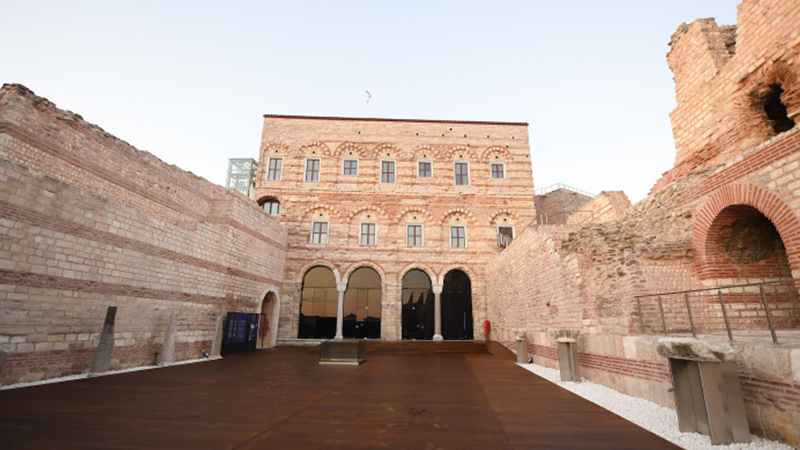The structure often referred to as the “House of Porphyrogenitus” from the 14th century onwards is commonly linked with Tekfur Palace. The term “Porphyrogenitus”—meaning “born in the purple chamber”—was used for children born to reigning Byzantine emperors.
Considered part of the Blachernae Palace complex, Tekfur Palace is believed to have served as the official residence of Byzantine emperors from the 13th century onwards. Built adjacent to the land walls between Edirnekapı and Ayvansaray, the palace fell into ruin for many years after its roof collapsed due to fires during the Ottoman era.
Since 1995, archaeological excavations led by Prof. Filiz Yenişehirlioğlu have uncovered numerous architectural remnants, as well as many objects made of ceramic tiles and glass. Some of these finds, along with replicas of tile panels once produced in the palace’s kilns, are on display in the museum today. Tekfur Palace is unique as the only Byzantine palace in Istanbul to survive with its architectural integrity intact. The three-storey structure facing the courtyard features ornate decorations emblematic of late Byzantine art.
In later years, during the reign of Sultan Ahmed III, tile workshops were established in the remaining sections of the palace by master craftsmen brought from İznik, and tile production commenced. Clay used in the production of these tiles was sourced from the Alibeyköy Stream. Among the works produced here are the tile panels of the Ahmed III Fountain in Sultanahmet, the mihrab panels of the Kandilli Hekimoğlu Ali Paşa Mosque, and those of the Eyüp Cezeri Kasım Paşa Mosque. During this period, pottery production extended from the Tekfur Palace courtyard to the wider area up to Eyüp, and glassworks known as “Şişehane” were also active in the vicinity.
